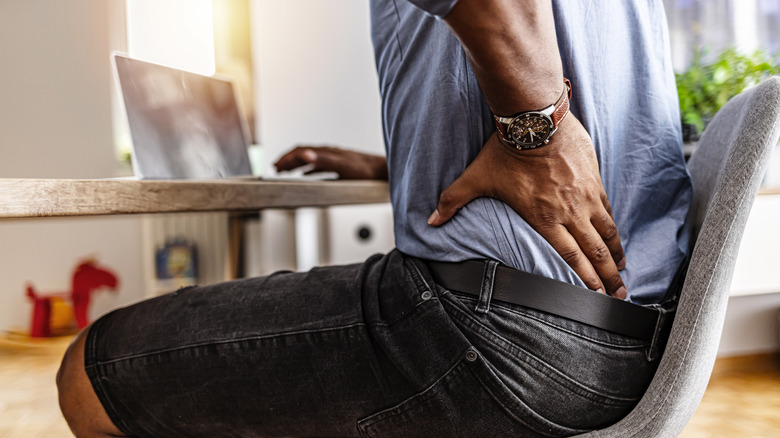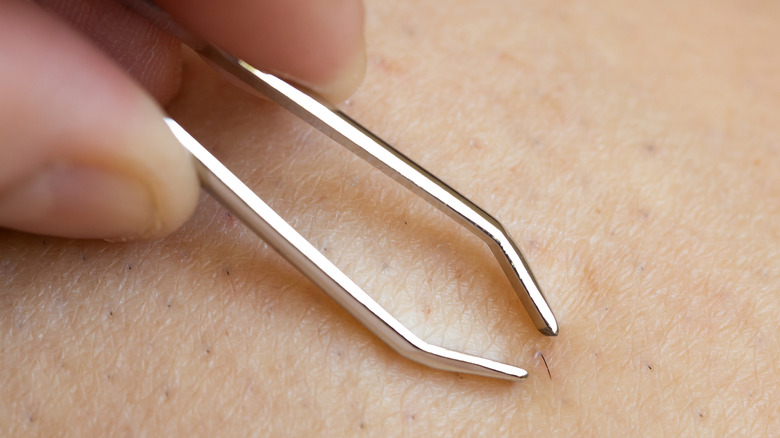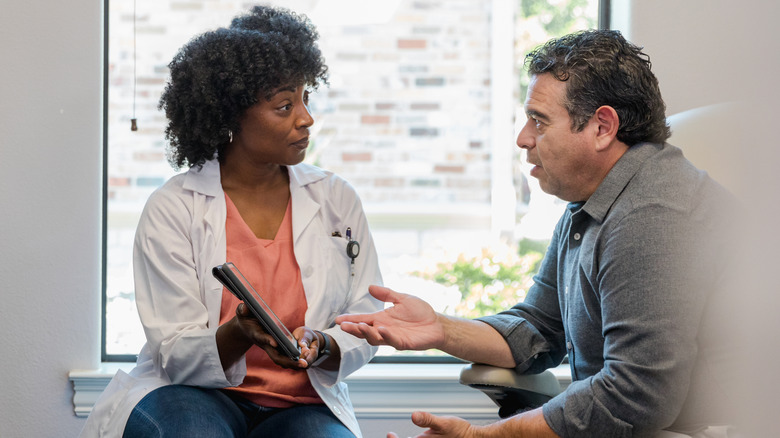The Unexpected Reason It Hurts To Sit Down (And What Causes It)
If you experience pain as you lower yourself down onto the couch, you might attribute it to a ripe bruise, an unfortunate sunburn on your behind, or any number of other reasons. But the real cause of your pain when sitting down may be lurking a little deeper beneath the surface.
Affecting more than 70,000 people annually across the country, a pilonidal cyst is a small, fluid- or air-filled growth that often develops between the buttocks, according to Cleveland Clinic. While some people may only be affected once, others may deal with pilonidal cysts on a recurrent basis. Symptoms can include swelling, redness, the presence of a small divot, or odorous discharge from a pocket of pus. Some individuals may also experience fever, nausea, or fatigue. Above all, many people feel heightened pain when sitting down.
Because these cysts tend to take up residence between the butt cheeks, some people may feel uncomfortable informing their physician of the issue. However, treatment for a pilonidal cyst is important — particularly if they continue to come back.
Ingrown hairs may be the root of the problem
Rather than just between the buttocks, experts from Mayo Clinic note that pilonidal cysts may also emerge just above the crease of our buttocks. Ingrown hairs are usually to blame. Engaging in a predominantly sedentary lifestyle can redirect hair growth back below the skin's surface. In an attempt to force the foreign object back out, the body responds by forming a cyst.
Some people may be more prone to developing pilonidal cysts than others. This can include men, individuals who have obesity or overweight, thick body hair, and people who spend most of their day seated. Wearing snug clothing that increases rubbing or pressure placed on the skin can further exacerbate this pain. Cleveland Clinic points out that most people affected are between the ages of 20 and 35.
If a person does not receive treatment for pilonidal cysts, it can lead to complications. These may include sinus cavities, abscesses, and a potentially greater risk of developing skin cancer.
Treatment and prevention of pilonidal cysts
Although some pilonidal cysts will take care of themselves, other cases may require medical intervention. Some treatment methods may focus on treating the cyst directly. while others might center on preventing recurrent cysts. For some patients, your doctor may opt to cut open and drain the cyst, reports Cleveland Clinic. Antibiotics may also be used to ease skin inflammation. Phenol injections can treat the cyst directly and help protect against new cases. Additionally, laser hair removal can help reduce the likelihood of ingrown hairs.
Some individuals may choose to take hair removal into their own hands by shaving the hair between or around the buttocks on a regular basis. Other people may use chemical hair-removal products. Just be sure to keep these products away from the anus and any damaged skin, cautions Boston Children's Hospital. Keeping the area clean is also important during treatment. This can be achieved by using a hand-held shower head to spray between the buttocks up to three times a day for no more than 15 minutes. Finally, try and limit the length of time you spend sitting down. Taking frequent breaks to get up and move around will help take pressure off of the area.



